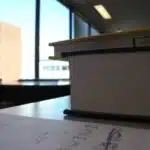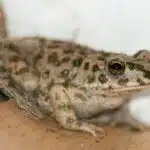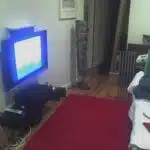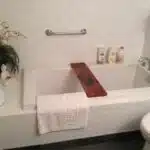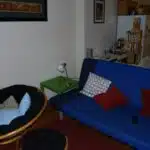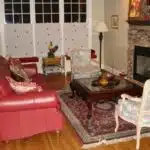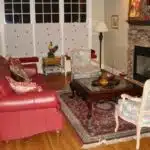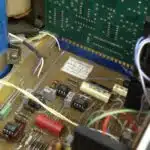The tiny house movement has been gaining momentum in recent years, with more and more people opting for minimalist living in smaller spaces. However, the lack of internet access is often a challenge that tiny house residents face, leading to adjustments in their daily routines. As a researcher and writer on the topic of tiny house living, I have observed various coping mechanisms that tiny house residents employ to deal with this challenge.
While some may view the absence of internet as a hindrance in today’s digital age, others perceive it as an opportunity to disconnect and embrace a simpler way of life. Tiny house residents who choose to live without internet access often find creative ways to stay connected with the world around them, such as utilizing public Wi-Fi or visiting local libraries. Additionally, without the constant distractions of social media and online entertainment, they are able to focus on more meaningful activities like reading, cooking, or spending time outdoors. Understanding how tiny house residents cope with not having internet can provide valuable insight into alternative lifestyles and strategies for simplifying daily life.
The Appeal Of Tiny House Living
Sustainable living has become a priority for many individuals in the modern age. The appeal of tiny house living lies in its potential to provide a more sustainable way of life. By downsizing and minimizing material possessions, individuals can reduce their environmental impact. Tiny homes are built with energy-efficient materials, and often rely on renewable energy sources such as solar power. This type of living is not only better for the environment, but also offers financial benefits.
One of the most significant financial benefits of tiny house living is the reduced cost of housing. Traditional homes can be expensive to purchase or rent, and often come with high utility bills. In contrast, tiny homes are significantly cheaper to build and maintain. They typically require less energy to heat and cool, resulting in lower utility bills. Additionally, since tiny homes are compact in size, they require less land than traditional homes, which translates into further cost savings.
The appeal of tiny house living extends beyond just financial benefits and sustainability concerns. It provides an opportunity for individuals to simplify their lives and focus on what truly matters. By letting go of excess possessions, people can achieve a sense of freedom that goes beyond material possessions. However, this lifestyle does come with its own set of challenges – one being limited internet access which we will discuss further below.
The Challenge Of Limited Internet Access
Limited internet access can be a significant challenge for tiny house residents, especially those who rely on the internet for work or entertainment. In an age where most people are connected to the internet 24/7, it can be difficult to adjust to a lifestyle without constant access to online resources. However, exploring alternatives and managing frustration can help make this transition easier.
One alternative that some tiny house residents have found helpful is using public Wi-Fi hotspots. Libraries, coffee shops, and other public places often offer free Wi-Fi access, which can provide a temporary solution for those who need to get online. Additionally, some tiny house communities have shared internet spaces or communal areas where residents can access the internet together.
Managing frustration is also an important aspect of coping with limited internet access. Residents may find it helpful to set specific times during the day when they check their email or browse social media, rather than constantly checking their devices throughout the day. Engaging in offline activities such as reading books, participating in outdoor activities, or spending time with loved ones can also help alleviate stress and anxiety related to limited internet access.
As we continue to explore ways of living simply and sustainably, embracing simplicity and disconnecting from technology may become more commonplace. While limited internet access may present challenges for some tiny house residents initially, it is possible to adapt and find alternative solutions that allow for a fulfilling and balanced lifestyle.
Embracing Simplicity And Disconnecting
- Tiny house residents often embrace minimalism as a lifestyle choice and strive to live with fewer possessions, which can lead to a simpler and more meaningful life.
- By embracing minimalism, tiny house residents often make the decision to disconnect from technology, such as the internet, in order to focus on their personal goals and develop meaningful relationships.
- Disconnecting from technology can be a difficult adjustment for many, however, tiny house residents often report feelings of contentment and peace due to the lack of online distractions.
- Research suggests that by embracing minimalism and disconnecting from technology, tiny house residents are able to grow emotionally and spiritually, allowing them to live fuller lives.
Embracing Minimalism
Embracing minimalism is a crucial aspect for those who choose to live in tiny houses. It promotes the idea of living with less, which aligns well with the minimalist philosophy of simplicity and intentional living. Minimalism benefits tiny house residents by reducing their expenses, clutter, and environmental footprint. However, it also poses some challenges such as adjusting to a simpler lifestyle and letting go of material possessions.
One of the main benefits of embracing minimalism is financial freedom. Tiny house residents save money on rent, utilities, and maintenance costs. They also tend to buy fewer things since they have limited storage space. This results in less spending on unnecessary items and more resources available for experiences that enrich their lives. Another advantage of minimalism is decluttering one’s life and creating physical space for meaningful activities like meditation or yoga.
On the other hand, minimalism can be challenging for those who are used to a consumer-driven lifestyle. It requires eliminating excess possessions and simplifying daily routines. Letting go of sentimental items or things that were once considered valuable can be emotionally difficult for some people. Additionally, adapting to a new way of living – one where instant gratification is replaced with deliberate choices – can take time and effort. Despite these challenges, embracing minimalism ultimately leads to greater clarity, focus, and fulfillment in life.
In conclusion, embracing minimalism is an essential part of living in a tiny house that offers many benefits while presenting its own set of challenges. By intentionally choosing simplicity over complexity, tiny house residents gain financial freedom and mental clarity while reducing their environmental impact. While it may not be easy at first, adjusting to this new way of life can ultimately lead to a more fulfilling existence rich in experiences rather than material possessions.
Disconnecting From Technology
Embracing simplicity and disconnecting from technology go hand in hand for those who choose to live in tiny houses. Digital detox has become increasingly popular as people recognize the negative impact of excessive screen time on mental health, relationships, and productivity. Unplugging habits can help individuals regain control over their lives by reducing distractions and fostering meaningful connections with themselves and others.
One of the main benefits of disconnecting from technology is improved well-being. Studies have shown that excessive use of social media, email, and other digital platforms can lead to anxiety, depression, and sleep disturbances. By taking a break from screens and engaging in offline activities like reading, hiking, or cooking, tiny house residents can reduce stress levels and enhance their creativity and problem-solving skills. Moreover, unplugging habits can foster deeper human connections by allowing individuals to be fully present in the moment without distractions.
However, disconnecting from technology can also pose some challenges for those who are used to being constantly connected. It requires discipline and self-awareness to resist the urge to check notifications or scroll through newsfeeds. Moreover, some people may feel FOMO (fear of missing out) or experience withdrawal symptoms when they first start digital detox. Nonetheless, embracing simplicity and disconnecting ultimately leads to a more balanced life where individuals can prioritize what truly matters to them while cultivating healthy habits that promote physical and mental well-being.
In summary, embracing simplicity includes disconnecting from technology for tiny house residents searching for a fulfilling lifestyle free from unnecessary distractions. Digital detox offers multiple benefits such as improved well-being and deepening human connections but may require discipline when trying to adjust unplugging habits initially. Ultimately though it leads to a more balanced life focused on priorities that matter most promoting one’s overall health both physically and mentally.
Finding Alternatives To Home Internet
Embracing simplicity and disconnecting from the virtual world is one of the key aspects of tiny house living. However, not having internet at home can create a challenge for some residents who need to stay connected for work or personal reasons. In this section, we will discuss some alternatives that tiny house residents can explore to get their internet fix without sacrificing their minimalist lifestyle.
Co-working spaces are an excellent option for tiny house residents who need reliable internet access. These spaces provide a comfortable and productive environment where people can work alongside others in a shared office setting. Many co-working spaces offer high-speed internet, meeting rooms, and even printing services, making them an ideal solution for small business owners, freelancers, or remote workers.
Another alternative to home internet is mobile hotspots. These devices allow users to connect to the internet using cellular networks instead of Wi-Fi. Mobile hotspots are portable and easy to use, making them perfect for people who are always on-the-go or travel frequently. They are also useful during power outages when traditional internet service may not be available.
Utilizing public wi-fi is another option for tiny house residents who only need occasional access to the internet. Public places such as libraries, cafes, restaurants, and shopping malls often offer free Wi-Fi access to their customers. While this option may not be as reliable as having a dedicated home connection, it can still be an effective way to stay connected without breaking the bank.
In summary, there are several alternatives that tiny house residents can explore to get their internet fix without compromising on simplicity and minimalism. Co-working spaces provide reliable high-speed internet access in a professional setting while mobile hotspots offer flexibility and portability. For those who only need occasional access, utilizing public Wi-Fi is a cost-effective solution that allows them to stay connected while enjoying the benefits of tiny house living.
Utilizing Public Wi-Fi
One of the challenges that tiny house residents face is not having a reliable internet connection. However, there are several ways to stay connected without breaking the bank. One option is to explore cafes in the local area, as many offer free Wi-Fi to customers. This can be a great way to get out of the house and still have access to the internet.
Another option is using mobile hotspots. These devices connect to cellular networks and provide a Wi-Fi signal that can be used by multiple devices. They are portable, making them ideal for tiny house residents who need internet access on the go. With many affordable data plans available, this can be a cost-effective solution for those who don’t want to pay for traditional broadband.
In summary, staying connected while living in a tiny house may require some creativity, but it’s definitely possible. Exploring cafes and using mobile hotspots are just two examples of ways to stay connected without breaking the bank. In the next section, we’ll look at another option – visiting local libraries – which can provide additional benefits beyond just internet access.
Visiting Local Libraries
Utilizing public Wi-Fi can be a great option for tiny house residents who are looking to connect to the internet. However, it may not always be reliable or available in certain areas. In such cases, exploring alternative options becomes necessary.
One option is visiting local libraries which can provide access to online resources that may not be available elsewhere. Libraries usually have computers and printers that can be used by anyone with a library card, and many offer free Wi-Fi as well. This can be especially helpful for those who work remotely or need to complete online tasks.
In addition to providing internet access, libraries also offer a variety of other services and resources. From books and magazines to workshops and events, libraries prioritize meaningful activities that can enhance the lives of their patrons. By taking advantage of these opportunities, tiny house residents can not only stay connected but also engage with their communities in a meaningful way.
Prioritizing Meaningful Activities
While internet access has become a necessity for many, tiny house residents have found creative ways to cope with the absence of it. One solution is to prioritize meaningful activities that do not require the internet. For instance, many tiny house dwellers take up creative hobbies such as painting, woodworking or knitting. These activities provide a sense of accomplishment and relaxation that can be difficult to achieve through online browsing.
Another activity that tiny house residents often engage in is mindful meditation. This practice involves focusing on the present moment and being aware of one’s thoughts and feelings without judgment. It allows individuals to connect with themselves and their surroundings, which can be particularly helpful when living in a small space without the distraction of digital devices.
Overall, tiny house living encourages individuals to find joy in simpler things rather than relying on technology for entertainment and socializing. By prioritizing meaningful activities like creative hobbies and mindful meditation, they are able to lead fulfilling lives without feeling the need for constant internet access. Next, we will explore how reading can also play an important role in coping with the lack of internet connection in tiny houses.
Reading
- Tiny house residents often experience difficulty in accessing the internet, which can limit their ability to obtain and enjoy reading materials.
- However, there are a number of offline resources available that tiny house residents can use to find books, magazines, and other reading materials.
- Reading has many potential benefits, including improved focus, memory, and creativity, and can help reduce stress, depression, and anxiety.
- Creative ways to enjoy reading for tiny house residents include attending book clubs, book swaps, and creating a personal library from books acquired from thrift stores and garage sales.
- Reading can also be enjoyed through listening to audio books while doing chores, or attending local readings and lectures hosted by libraries and bookstores.
- Tiny house residents can take advantage of these offline reading opportunities to reap the benefits of reading, despite not having access to the internet.
Finding Offline Reading Materials
In today’s digital age, internet connectivity is essential for most individuals. However, tiny house residents often have to cope with limited or no internet access due to various reasons. While this may seem challenging at first, it also provides an opportunity for them to engage in offline hobbies and DIY projects that can enrich their lives. One such activity is reading, which can be a great way to pass the time and expand their knowledge.
Finding offline reading materials can be a bit of a challenge, but there are several ways tiny house residents can go about it. Firstly, they could visit their local library or bookstore and check out some books that interest them. Alternatively, they could exchange books with other tiny house residents in their community or join book clubs where members share their favorite reads. Additionally, they could explore secondhand shops and garage sales for old books that are difficult to find elsewhere.
Apart from traditional books, there are other offline reading materials that tiny house residents can enjoy as well. Magazines on various topics such as cooking, gardening, or home improvement can provide inspiration for new DIY projects and hobbies. Additionally, newspapers and journals offer a wealth of information on current events and topics of interest. By exploring these different options for offline reading materials, tiny house residents can keep themselves engaged while also improving their knowledge and skills.
In conclusion, while not having internet access may seem daunting at first glance, it provides an opportunity for tiny house residents to engage in offline hobbies and activities such as reading. By finding traditional books or exploring other forms of offline reading material such as magazines and newspapers, they can continue learning and growing without being reliant on the internet. Ultimately, this experience proves that living in a tiny house does not necessarily mean sacrificing one’s love for reading or learning new things; it just requires a bit more creativity in finding resources!
Benefits Of Reading
Reading is not only an enjoyable pastime but also has several benefits for individuals. For tiny house residents, reading can offer a way to unplug from the internet and connect with the world around them. By delving into the pages of a book, they can escape into different worlds and perspectives, allowing them to broaden their horizons without leaving their home. Additionally, reading has been shown to improve cognitive function, increase empathy, and reduce stress levels.
For those living in a tiny house with limited space, it’s important to choose books wisely. Book recommendations from friends or online forums can help narrow down choices and ensure that each book read is worthwhile. Additionally, finding books that align with individual interests or hobbies can provide opportunities for personal growth and skill development. For example, someone interested in home improvement could read books on DIY projects or sustainable architecture.
Finally, one of the most significant benefits of reading for tiny house residents is the opportunity to unplug from technology. In today’s digital age where many people are constantly connected to their devices, taking time away from screens can be essential for mental health and well-being. Reading offers an alternative way to engage with oneself and the world without being tethered to technology. Ultimately, by embracing offline reading materials and taking time to unplug from technology, tiny house residents can enhance their lives in numerous ways while still enjoying their love of reading.
Creative Ways To Enjoy Reading
As a tiny house researcher, it’s important to explore different ways to enjoy reading beyond just picking up a book. One creative way is through book exchange programs, where individuals can trade books with one another and discover new titles they may not have otherwise come across. This not only provides an opportunity for community building but also allows for a diverse range of books to be accessible without taking up precious space in a tiny house.
Another way to enjoy reading is through audiobook subscriptions. With limited physical space, audiobooks provide the opportunity to listen while doing other activities such as cooking or exercising. It also eliminates the need for physical copies of books, making it an eco-friendly option for those living in a tiny house. Platforms such as Audible or Libro.fm offer thousands of titles, ensuring that there is something for everyone’s taste and interests.
For those looking for a challenge, participating in reading challenges or joining book clubs can add excitement and motivation to reading. Reading challenges can encourage individuals to try different genres or authors they may not have considered before, while book clubs provide opportunities for discussion and socialization with like-minded individuals. Both options offer accountability and motivation to read regularly while still allowing individuals to enjoy the benefits of reading in their own unique way.
Cooking
Cooking in a tiny house can be compared to navigating through a forest with limited resources. The cook must be strategic, cunning and able to plan ahead. This is where meal planning comes into play. Tiny house residents must have a well thought out menu and carefully select ingredients that will last long periods of time. Without internet, they cannot rely on quick searches for recipes or tips on storage. Instead, they must utilize their own knowledge and creativity when it comes to cooking.
One solution to the limited space in tiny houses is outdoor cooking – an experience that many people enjoy but do not always get the opportunity to partake in. With the right equipment, such as a portable grill or campfire pit, meals can be prepared outside, expanding the living space while also providing an enjoyable activity for residents. Outdoor cooking also has the added benefit of reducing heat inside the tiny house during warmer months.
Overall, cooking in a tiny house requires careful planning and utilization of available resources. Meal planning allows for efficient use of ingredients and storage while outdoor cooking provides both practicality and enjoyment. In the next section, we will discuss how spending time outdoors benefits tiny house residents beyond just cooking.
Spending Time Outdoors
Spending time outdoors is an essential aspect of tiny house living, especially for those who do not have internet access. Without the distraction of technology, tiny house residents can focus on outdoor activities and reap the many benefits that come with disconnecting from the digital world. Outdoor activities like hiking, biking, and camping can help improve physical health, reduce stress levels, and boost one’s mood.
Additionally, spending time in nature allows tiny house residents to disconnect from the pressures of modern life and reconnect with themselves. Research has shown that being in nature can improve cognitive function and increase creativity. It also provides an opportunity for mindfulness and meditation, which can be beneficial for mental health.
To make the most of their outdoor experiences, tiny house residents can consider creating a list of activities they enjoy doing outside or exploring new ones they have never tried before. They can also join local groups or clubs dedicated to outdoor recreation to cultivate community connections while engaging in their favorite pastimes.
By spending time outdoors and disconnecting from technology, tiny house residents can experience numerous physical and mental health benefits. In addition to improving individual well-being, engaging in outdoor activities provides an opportunity for building meaningful relationships within the community. In the next section, we will explore how cultivating community connections is another critical aspect of tiny house living.
Cultivating Community Connections
As the saying goes, “no man is an island.” This is especially true for tiny house residents who may feel isolated without internet access. However, building relationships with neighbors and organizing gatherings can help combat this feeling of loneliness. By creating a sense of community within their tiny house neighborhood, residents can cultivate connections that go beyond the virtual world.
To facilitate community-building, tiny house residents can organize events such as potluck dinners or game nights. These gatherings provide opportunities for individuals to connect with each other and form meaningful relationships. Additionally, participating in group activities allows residents to share resources and knowledge which can be valuable in a small living space. For example, one resident may have expertise in gardening while another may be skilled in carpentry. By sharing these skills with each other, they are able to create a more sustainable and self-sufficient community.
In conclusion, while not having internet access may seem like a hindrance to social interaction, it can actually provide an opportunity for tiny house residents to build stronger relationships with their neighbors. By organizing gatherings and participating in communal activities, individuals are able to cultivate connections that go beyond the digital realm. In the subsequent section, we will explore how participating in local events outside of the tiny house community can further expand social opportunities for tiny house residents.
Participating In Local Events
Cultivating community connections is essential for tiny house residents to create a sense of belongingness and support. However, not having internet access can be a challenge. Fortunately, there are ways to cope with this limitation and still actively participate in the local community.
Attending concerts is an excellent way to meet new people and immerse oneself in local culture. Many communities hold free or low-cost outdoor concerts during the summer months, providing opportunities for tiny house residents to enjoy live music while also engaging with neighbors. These events often draw large crowds, making them ideal for socializing and meeting new people.
Volunteering at local organizations is another way to build connections within the community while also giving back. There are countless volunteer opportunities available, from serving food at a local soup kitchen to helping out at a community garden. By volunteering regularly, tiny house residents can develop meaningful relationships with other volunteers and organization staff while also contributing to the greater good.
In addition to attending concerts and volunteering, tiny house residents can participate in other local events such as farmer’s markets, art fairs, and charity runs. These events provide further opportunities for socializing and meeting new people while also supporting local businesses and causes. By participating in these events regularly, tiny house residents can become valued members of their community.
Learning new skills is an important aspect of personal growth that can help individuals feel more fulfilled in life. In the next section, we will explore how tiny house living presents unique opportunities for learning new skills and developing hobbies that bring joy and purpose to daily life.
Learning New Skills
Living in a tiny house without internet can be challenging for some, but it also provides an opportunity to hone creativity and learn survival skills. Without the distraction of online entertainment, tiny house residents are forced to find other ways to occupy their time and learn new things. Some residents have reported taking up hobbies such as woodworking, gardening, or even learning how to play musical instruments.
In addition to developing new hobbies, living without internet can also teach valuable survival skills. Residents must learn how to conserve resources such as water and electricity, which can be limited in a tiny house. They may also need to learn how to repair appliances or build furniture using limited materials. These skills not only benefit the individual but also contribute to sustainability efforts by reducing waste and consumption.
Overall, living without internet in a tiny house can be challenging at first, but it provides an opportunity for personal growth and learning new skills. By embracing minimalism and focusing on what is truly important, residents can develop a greater appreciation for the simple things in life and become more self-sufficient. In the next section, we will explore how embracing minimalism can lead to a more fulfilling lifestyle.
Embracing Minimalism
It may seem daunting to imagine living without internet connection, especially in a world where we rely on technology for almost everything. However, tiny house residents have found ways to cope with this limitation and even embrace it as an opportunity to simplify their lives. Living with less has become a way of life for these individuals, and they have discovered that there is beauty in simplicity.
Exploring mindfulness is one way that tiny house residents have found contentment without the constant stimulation of the internet. Mindfulness practices such as meditation, yoga, or simply being present in the moment can help individuals find peace and fulfillment. By focusing on the present moment instead of constantly seeking external stimulation through technology, residents are able to appreciate the simple pleasures in life.
Finding contentment also comes from recognizing the benefits of a simpler lifestyle. Tiny houses allow for minimal possessions and a smaller carbon footprint. This type of living encourages individuals to be more intentional with their purchases and focus on what truly brings them joy. By eliminating excess material possessions and distractions, residents are able to cultivate deeper connections with themselves, others, and their environment. Reflecting on the benefits of a simpler lifestyle can inspire individuals to make changes in their own lives towards a more mindful and intentional existence.
Reflecting On The Benefits Of A Simpler Lifestyle
The decision to adopt a simpler lifestyle by living in a tiny house comes with several benefits that individuals enjoy. One such benefit is mindful consumption, which refers to the conscious utilization of resources to avoid waste and promote sustainability. Tiny house residents are compelled to live with less, leading them to become more mindful of what they consume daily. By embracing this lifestyle, they can reduce their carbon footprint and contribute positively towards environmental conservation.
Apart from promoting sustainable living, adopting a simpler lifestyle has numerous mental health benefits. Living in a tiny house encourages individuals to declutter their lives physically and mentally, reducing anxiety levels and promoting relaxation. The minimalist nature of tiny houses inspires creativity and fosters an appreciation for simplicity in life. Additionally, the financial freedom that comes with living in a tiny house is liberating for many individuals, as it allows them to prioritize their well-being over material possessions.
In conclusion, the benefits of adopting a simpler lifestyle through tiny house living are numerous. Mindful consumption promotes sustainability while reducing wastage and cluttering our environment. Furthermore, there are several mental health benefits associated with decluttering your life physically and mentally. Overall, adopting this way of life offers people an opportunity to live authentically while prioritizing their overall well-being over material possessions.
Conclusion
Tiny house living has become an appealing lifestyle choice for many people seeking simplicity and minimalism. However, one challenge that tiny house residents face is limited access to the internet. Despite this challenge, many have found creative ways of coping with this limitation.
Rather than viewing limited internet access as a hindrance, tiny house residents have learned to embrace simplicity and disconnect from the constant stimulation of technology. Some have found alternative ways of accessing the internet through public Wi-Fi or participating in local events that offer free Wi-Fi access. Others have used their limited internet access as an opportunity to learn new skills and engage in offline activities such as reading, writing, and gardening.
As the adage goes, “Less is more.” Tiny house residents have embraced this philosophy by living with less physical space and fewer material possessions. They have also found joy in disconnecting from the constant stimulation of technology and embracing a simpler way of life. By reflecting on the benefits of their lifestyle choices, they are able to find contentment and fulfillment in their daily lives without relying on constant online connectivity.
Image Credits
- “internet explorer” by Sean MacEntee (featured)


